6 Bad Habits That Hike Up Your Grocery Bill
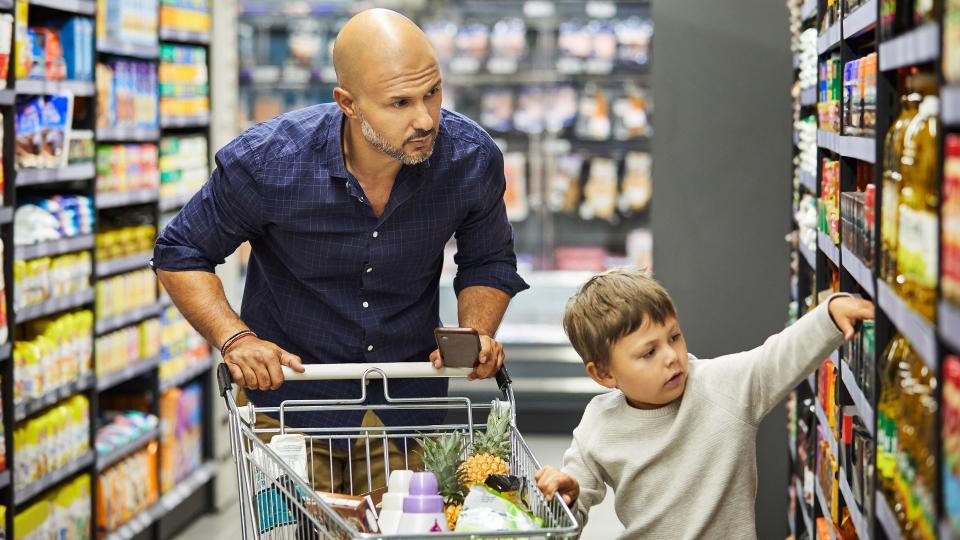
$150-$300: That's the average amount of money per month, per person that people are spending on food, according to the budgeting app Mint.com. That estimated target varies by age and location, but whoever and wherever you are, staying within your grocery budget may be causing some furrowed brows lately.
Find Out: 5 Best Foods To Buy in Bulk at Costco This Spring
Good To Know: 10 Dollar Store Items That Aren't Even Worth the Buck
The cost of groceries recently had the largest 12-month increase in over 40 years, with meats, poultry, fish and eggs surging by 13.7% and beef up 16%. Not surprisingly, shopping behaviors are also shifting, with more shoppers hunting for deals and thinking twice about what they buy and where they buy it.
So what are those "bad" habits we can find between the lines of that eye-popping grocery store receipt? GOBankingRates consulted Joel Larsgaard, one half of the "How To Money" podcast, in which two best friends talk about personal finance over a craft beer, to help break down the things we can stop and start doing to feed ourselves for less.
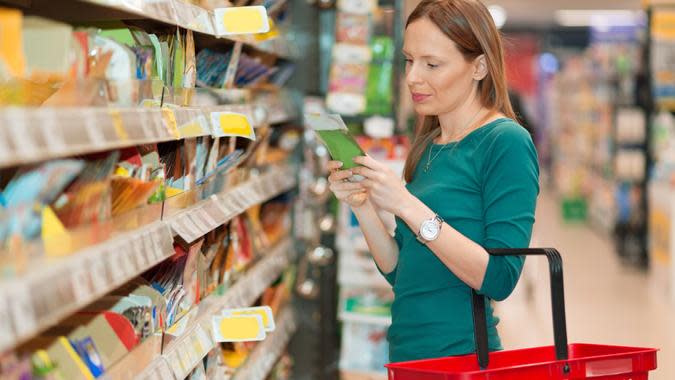
Going To the Wrong Store
"Where you shop makes a big difference. If you're going to the more expensive places, it's worth checking out some of the stores that specialize in discounting," Larsgaard said.
Places like Trader Joe's, Lidl or Aldi are great places to start. Especially for pantry items that are available anywhere, you're probably paying a premium for them at a fancy grocery store when you can get similar items for cheaper elsewhere. "Try these on for size, and you'll be shocked at how much money you can potentially save," he said.

No Plans
"Not planning your meals out can lead to aimlessness," Larsgaard said. Aimless shopping leads to buying stuff you don't need, which in turn leads to waste, in terms of both food and money. An estimated 30-40% of the food produced in the United States gets thrown out, according to the USDA, while the average family of four wastes nearly $1,500 worth of food each year.
When formulating a meal plan, include buying ingredients you can stretch across multiple meals in your plan. Think about how you'll repurpose leftovers into lunch or another meal, like turning tonight's extra chicken into tomorrow's tacos.
Larsgaard also suggests letting the local sales guide your menu planning. Apps like Flipp.com allow you to enter your ZIP code to browse and search the current weekly sale ads and circulars for your area.
POLL: How Much Do You Expect Your Tax Refund To Be This Year?
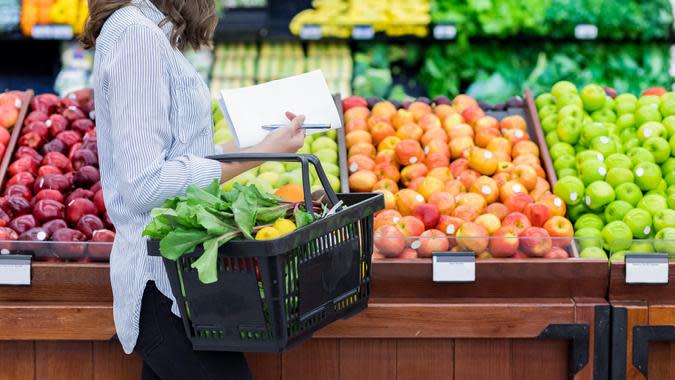
You're Still Shopping in the Store?
Curbside pickup may be one of the pandemic habits that will end up sticking around for many consumers, for reasons that go well beyond avoiding shared air space. Not only is it extremely convenient, Larsgaard said, it helps keep your shopping focused.
"When we go into the store, we're more susceptible to the end cap displays or a sale on something, and we end up putting a bunch of other things in our cart that we didn't necessarily go in there to purchase," he said. Shopping online and picking up curbside "is a time saver for one, and it's going to ensure that you're only going to get the stuff on your list."
Even if the store charges a fee for pickup, it's usually minimal and would likely be offset by the money you're saving.
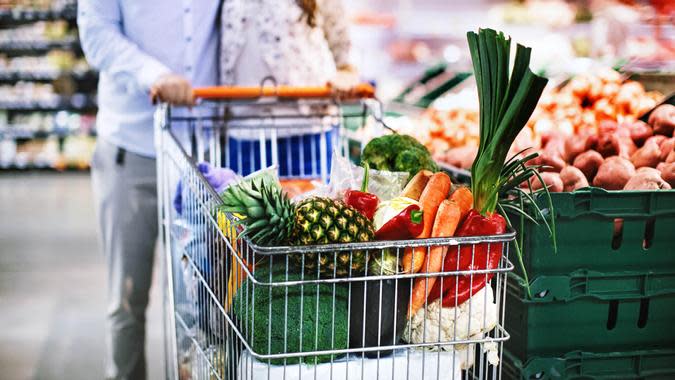
Are You Really Going To Eat All That?
"As Americans, we're prone to eating too much in general," Larsgaard said. Being more mindful about portion sizes and shopping only for the amount you want to eat can help save you money upfront. Portion the extra quantities into leftovers in the fridge or freezer right away.
It doesn't help that grocery stores and warehouse retailers like Costco are great at selling us stuff in oversized quantities. But it's only a good deal if it doesn't get wasted, so just make sure that the portions of perishables you're not going to consume right away get divided and saved in the freezer, labeled by name and date.
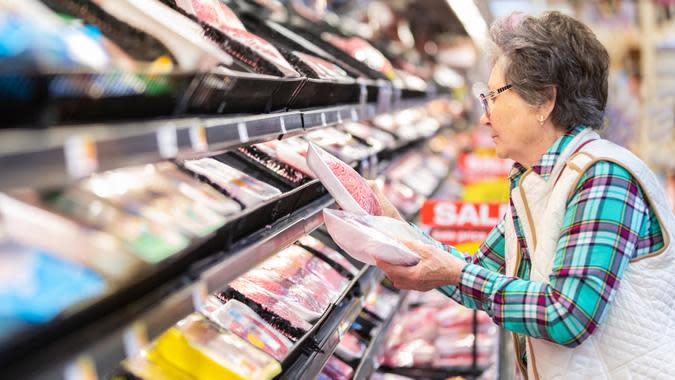
Going Heavy on Meat and Dairy
While prices are up across food categories, meat and dairy items like bacon, butter and milk have caused significant sticker shock recently, according to the UN Food and Agriculture Organization's Food Price Index. These also tend to be food groups that many Americans habitually plan their meals around.
"I think there's a problem with too much meat in our diets in general," said Larsgaard, who admits to being a meat lover himself. "Can we have one meatless meal a week? How about skipping the bacon?"
What's more, the greenhouse gas emissions caused by animal food production are twice as much as that of plant-based foods, according to a recent study. So in addition to being better for our health and our wallets, cutting down on these items is also a good habit for the planet.
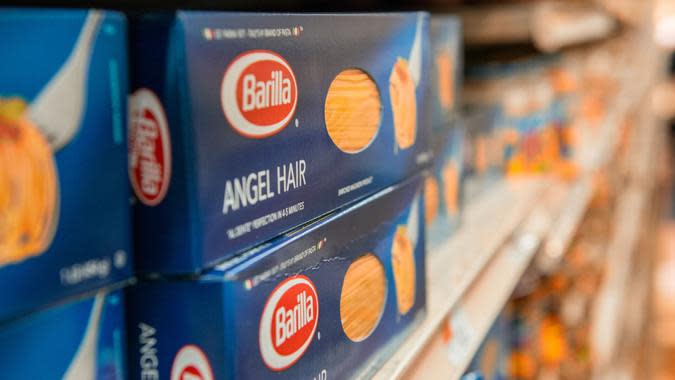
The Name-Brand Reflex
A big mistake people make, Larsgaard said, is automatically reaching for the name-brand items at the grocery store. "Advertising sticks in our brain and we're prone to buying name brands. If your gut reaction is to go for a name brand, pause and give it a second thought," he said.
He points out that there's been a proliferation of store brands that offer equal or better quality than name brands, including organic options, and that you can save as much as 20%-40% on the price.
Plus, many stores have money-back guarantees if you don't like them, so it doesn't hurt to give them a try if you're not sure.
More From GOBankingRates
This article originally appeared on GOBankingRates.com: 6 Bad Habits That Hike Up Your Grocery Bill
